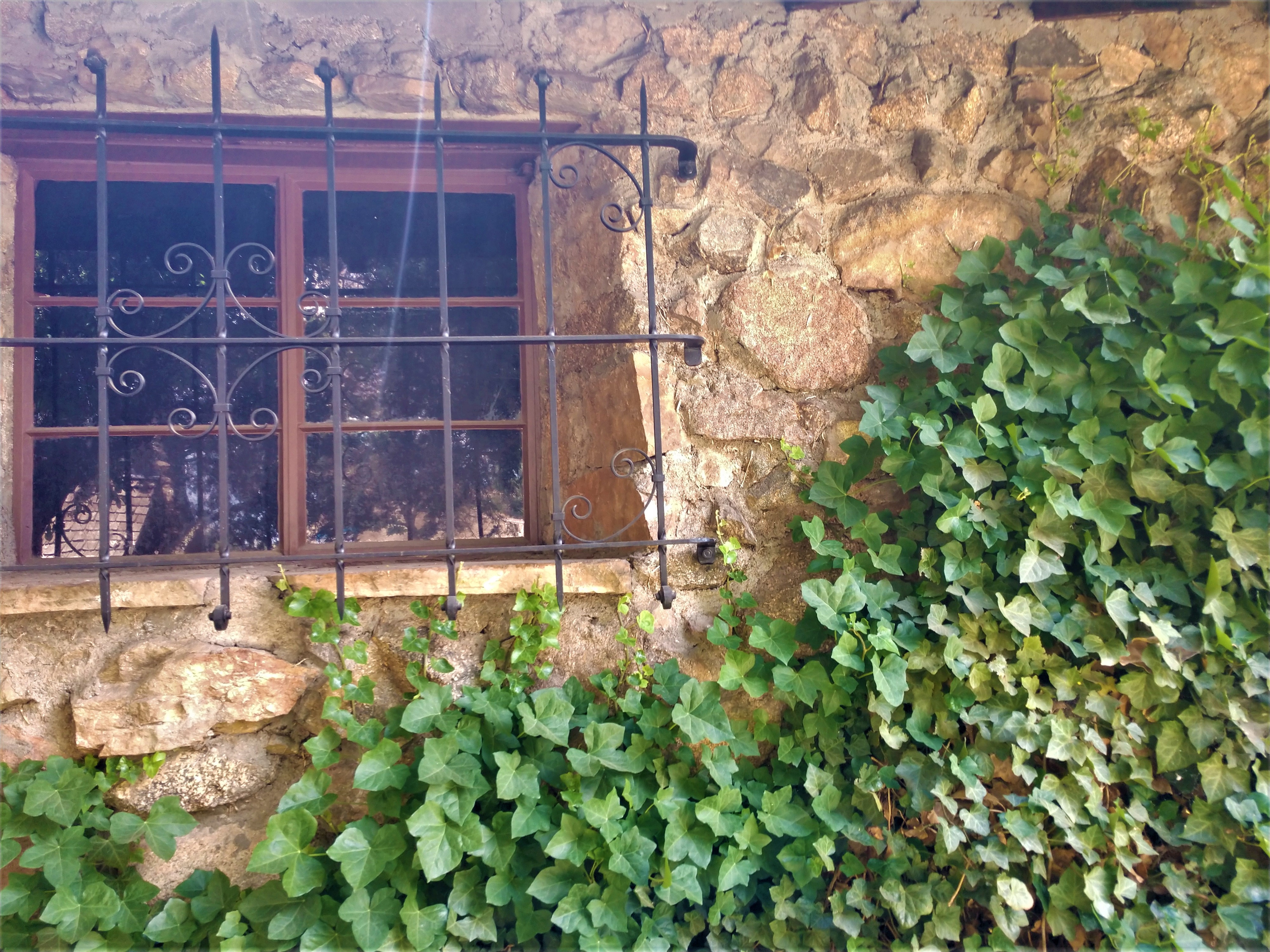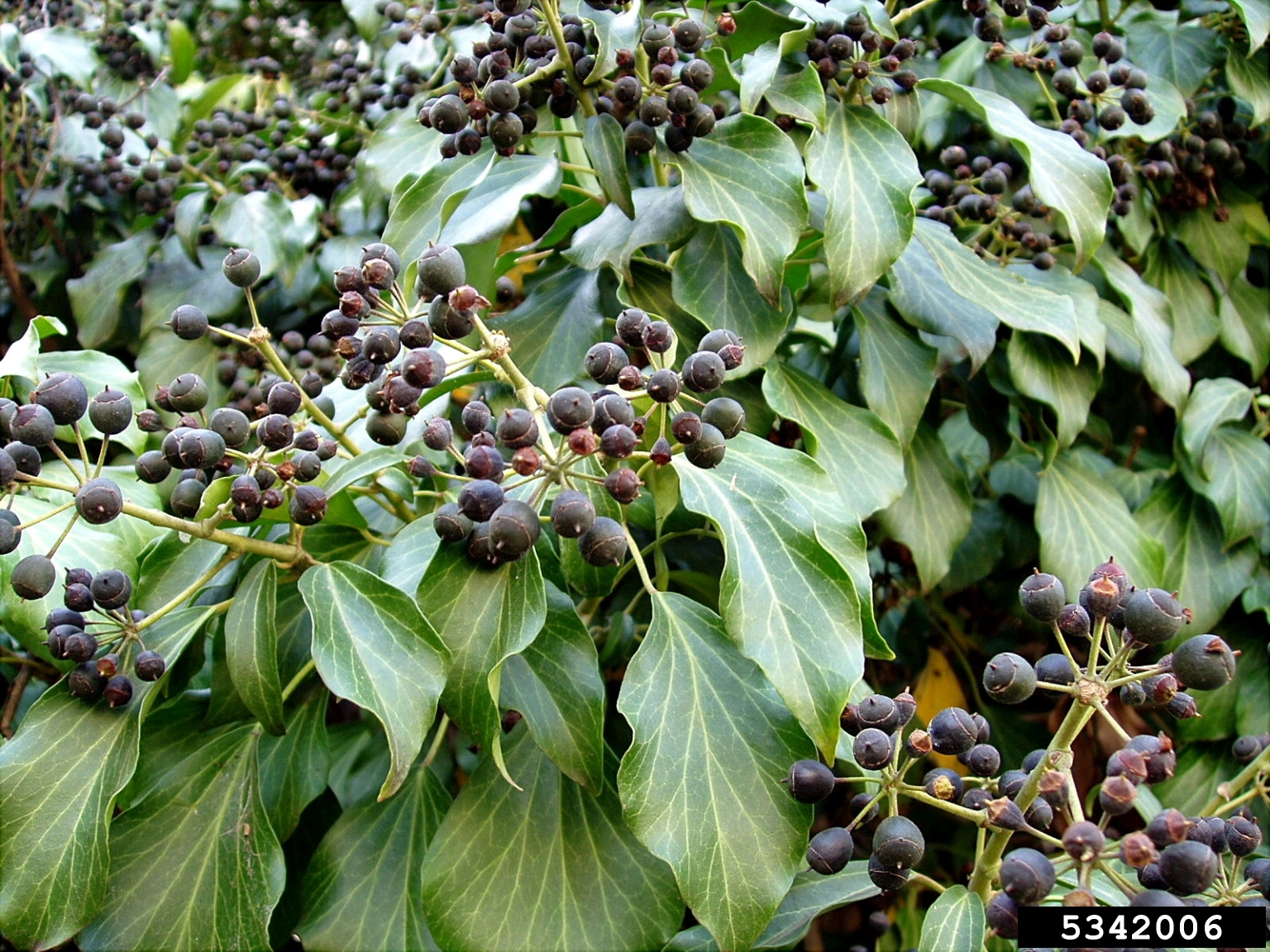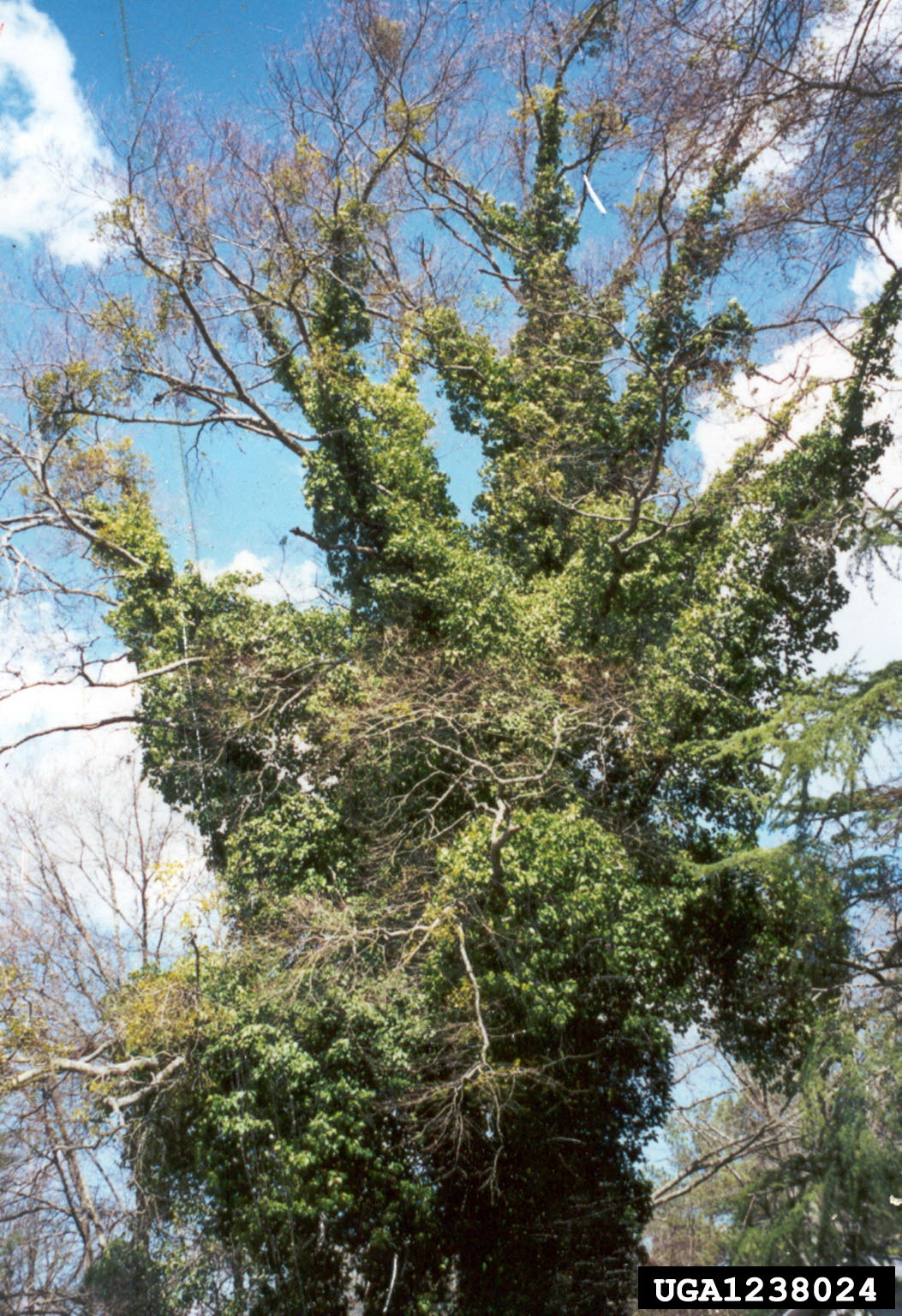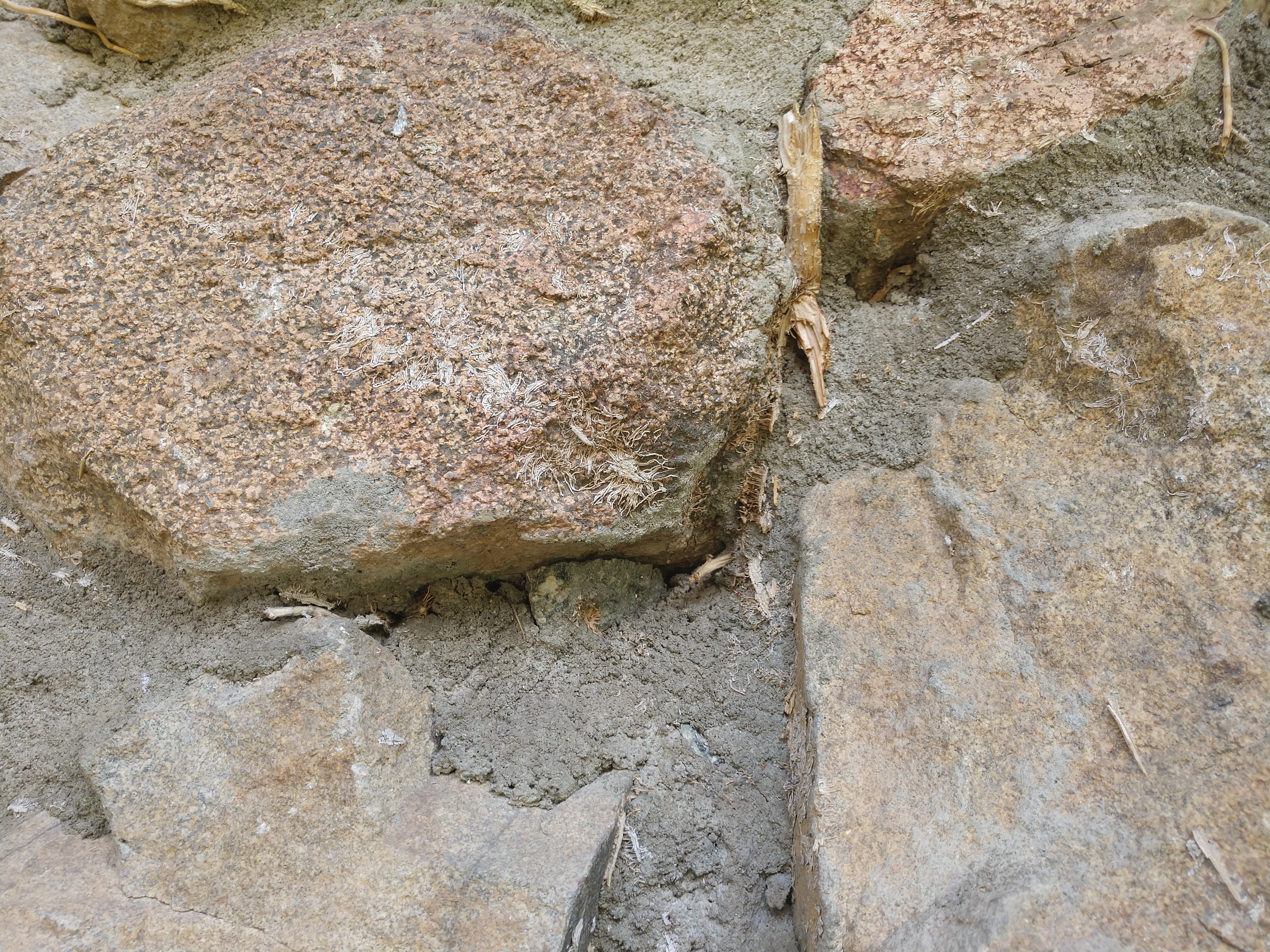 Watch Out for English Ivy - July 24, 2019 Jeff Schalau, Agent, Agriculture & Natural Resources University of Arizona Cooperative Extension, Yavapai County English ivy (Hedera helix) is an evergreen creeping vine that is a traditional element in residential and commercial landscapes. Most gardeners either love or hate this plant. It forms a dense mat of dark green foliage spreading horizontally over the ground and staying 6 to 8 inches high. It also climbs on walls, fences and trellises up to 50 feet high. English ivy develops woody stems and climbs by aerial rootlets that cling easily to brick or masonry, but less so to wood. For most, the desirable effect of English ivy is to create a tropical appearance. However, after many years, it can become a nuisance and certainly must be periodically kept in check. English ivy has rich, shiny, dark green, lobed leaves that hold their color if protected from winter sun and wind (hardy to USDA Zone 6). It has dark green, heavily veined 2" - 3" leaves with 3 - 5 lobes. English ivy is a native of England, Ireland, and northern Europe to the Caucasus Mountains. It was introduced into North America in early colonial times as an ornamental. In north central Arizona, English ivy prefers partial shade with regular irrigation. After 7-10 years, plants can bear round clusters of small greenish flowers, followed by ¼-inch blue-black berries. At this point, the growth also becomes more erect and less vine-like. Many people do not even recognize the plant as ivy at all once it begins to flower. Unless desired, this mature growth should be pruned out to promote the vine-like, immature growth. English ivy comes in a variety of leaf shapes and foliage colors. Many of these have small and/or variegated leaves and are often used in hanging baskets on patios and decks. Another common practice is to train the ivy onto a wire frame, such as a heart-shape, to create and interesting effect. These plants are easy to manage and maintain their attractiveness for several years. These cultivars are often more frost tender and should be grown indoors during the coldest winter months. In our area, the primary pest of English ivy is spider mites which can easily be controlled with periodic high pressure hose sprays or soapy water sprays. While English ivy cultivars are excellent accent plants in containers, plain old English ivy is not the most desirable landscape plant. Some of its problems include damage to structures from rootlets, creating refuge areas for pests (undesirable insects and rodents), and invasion into natural areas where it displaces native vegetation. English ivy is also poisonous. The cell sap causes severe skin irritation and the berries and leaves are toxic if ingested. English ivy can also damage trees when it climbs the trunk and competes for water, nutrients, and light. Ivy climbing trees should be carefully removed to avoid damage to the tree trunk and cleared away from the soil at the base of the tree. This is not as easy as it sounds because ivy roots can become closely intertwined with the tree roots. I suggest clearing ivy away from the trunk for at least a three-foot distance. Ivy should also be removed from structures and not be allowed to attach itself. Where this has occurred, it should be carefully removed to minimize damage. The rootlets often remove paint and stucco when pulled off and portions of the rootlets may remain on the structure creating a surface that will not properly hold paint. I have also seen ivy grow between wooden shiplap siding and destroy it. In coastal regions between California and British Columbia, English ivy has become a serious invader. Hand crews are used to remove small populations and herbicides are being researched to control larger populations. While I am not aware of invasive populations in our area, I am practically certain that it could become invasive in along the Verde River and its tributaries and it would not surprise me to hear of this already occurring. In my opinion, there are more desirable landscape vines than English ivy. You can follow the Backyard Gardener on Twitter – use the link on the BYG website. If you have other gardening questions, call or email the Master Gardener help line in the Prescott (928-445-6590/prescottmg@gmail.com) or Camp Verde (928-554-8992/verdevalleymg@gmail.com) and be sure to include your name, address and phone number. Find past Backyard Gardener columns or provide feedback at the Backyard Gardener web site: http://cals.arizona.edu/yavapai/anr/hort/byg/. Photos  English ivy (Hedera helix) growing on a stone building at the Sharlot Hall Museum (Jeff Schalau, University of Arizona).
English ivy (Hedera helix) growing on a stone building at the Sharlot Hall Museum (Jeff Schalau, University of Arizona). English ivy displaying erect, mature growth with fruit (Jan Samanek, Phytosanitary Administration, Bugwood.org).
English ivy displaying erect, mature growth with fruit (Jan Samanek, Phytosanitary Administration, Bugwood.org). English ivy growing on a mature oak tree in Laurens, South Carolina causing it to decline (Randy Cyr, Greentree, Bugwood.org).
English ivy growing on a mature oak tree in Laurens, South Carolina causing it to decline (Randy Cyr, Greentree, Bugwood.org). English ivy once grew on this stone wall. The rootlets are visible on the rock surfaces and stems have gone into voids. If this had been allowed to continue over many years, the mortar would be compromised (Jeff Schalau, University of Arizona).
English ivy once grew on this stone wall. The rootlets are visible on the rock surfaces and stems have gone into voids. If this had been allowed to continue over many years, the mortar would be compromised (Jeff Schalau, University of Arizona).Additional Resources English Ivy (Hedera helix), University of Tennessee Extension extension.tennessee.edu/publications/Documents/W231.pdf English Ivy Can Be Contained, Oregon State University Extension Service extension.oregonstate.edu/news/english-ivy-can-be-contained English Ivy in the Landscape, PennState Extension extension.psu.edu/english-ivy-in-the-landscape |